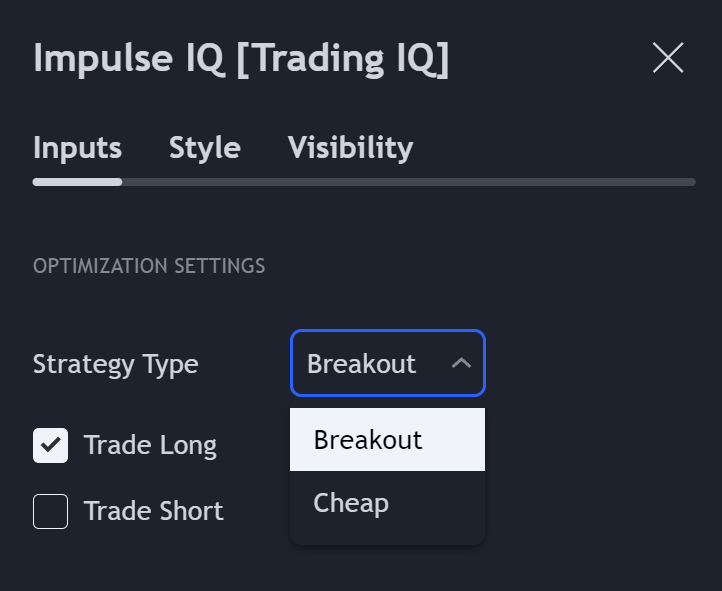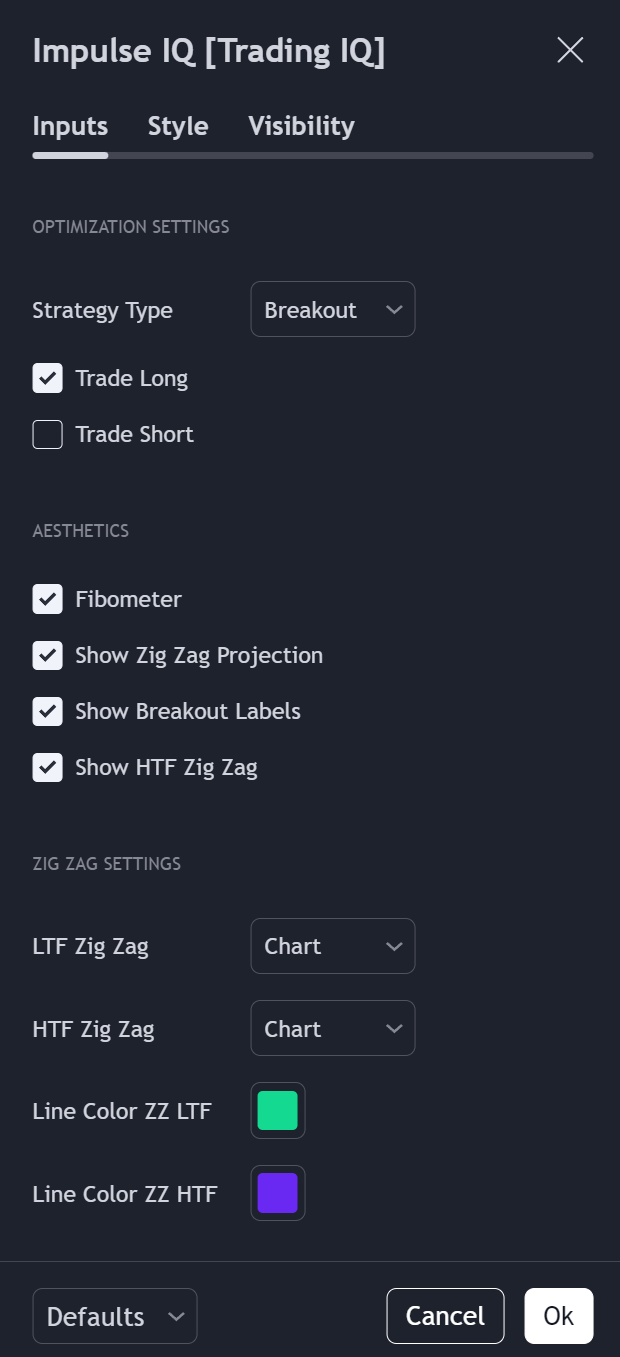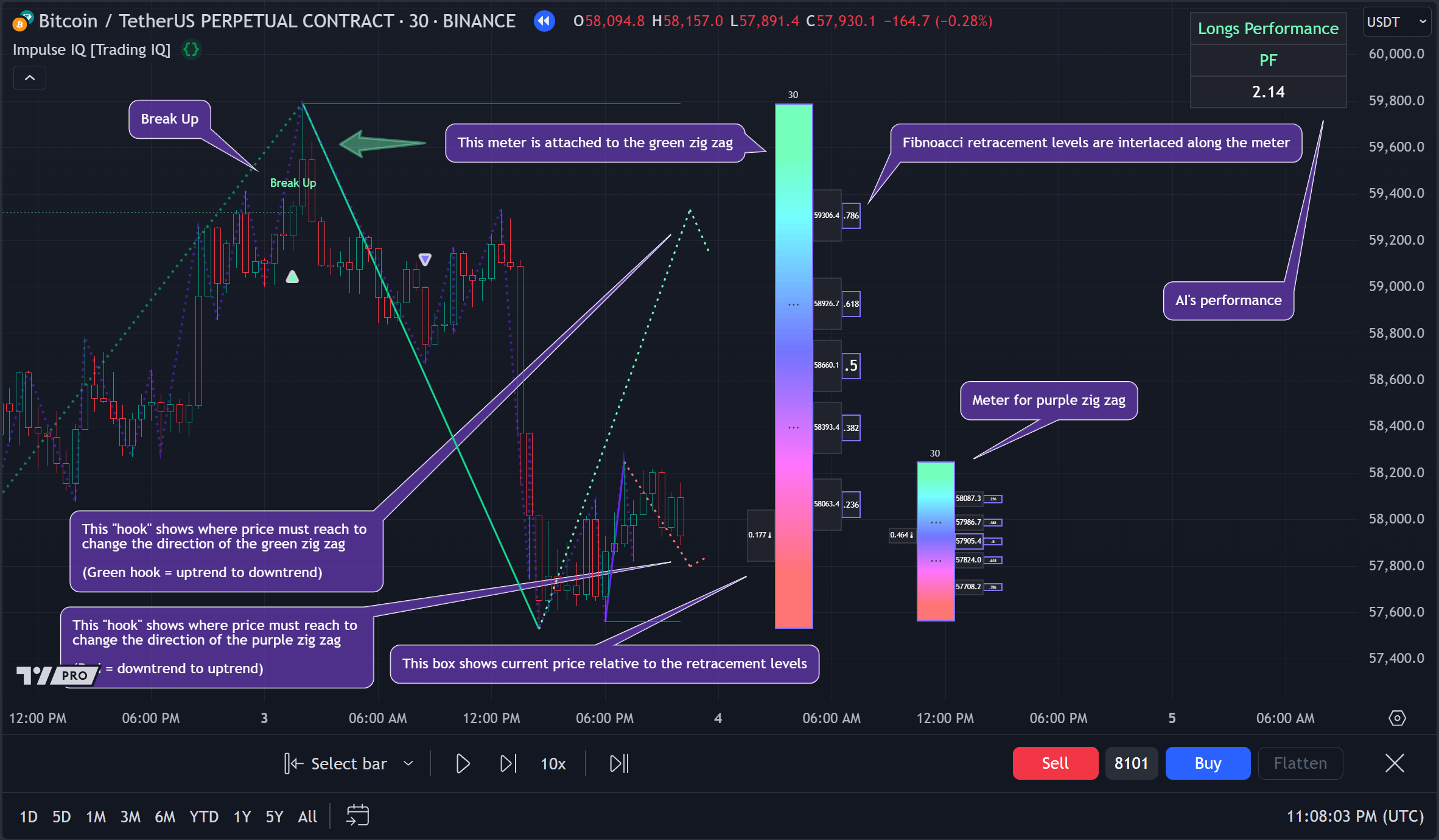Visuals And Settings
Despite a host of customization options - Impulse IQ has only two settings that control its functionality.
Strategy Type controls the heuristic for price breakout entry.

Breakout Strategy Type
Impulse IQ can trade in one of two ways: Entering breakouts as soon as they happen (Breakout Strategy Type) or entering the retracement of a price breakout (Cheap Strategy Type).
Generally, the Breakout Strategy type will take a greater number of trades and enter a breakout quicker. The Cheap Strategy type will usually take less trades, but potentially enter a better time/price point, prior to the next leg up of a break up, or the next leg down of a break down.
The Trade Long setting enables Impulse IQ to take long positions.
The Trade Short setting enables Impulse IQ to take short positions.

Amongst the core-functionality settings, various customization settings for visuals exits.

The chart features two self-learning zig-zag indicators, colored green and purple, which highlight shifts in price trends. For this image, the green zig-zag represents an uptrend, and the purple zig-zag represents a downtrend.
Break Up Label: This label highlights a critical point in the chart where the price broke upward. This is marked at the top of the current green zig-zag, signaling the highest point reached before the market begins to reverse.
A color-coded vertical meter is displayed next to the green zig-zag. This left-most meter visually tracks price movements relative to the zig-zag and shows how far the price has moved from the peak or bottom. As price fluctuates, the meter adjusts accordingly, offering a quick visual gauge of price relative to recent highs and lows.
Fibonacci retracement levels are interlaced along the meter: Along this vertical meter, Fibonacci retracement levels are integrated, indicating key potential reversal zones. These levels represent significant points where the price might retrace after a major move and provide useful references for traders.
Similar to the green zig-zag, the purple zig-zag also has a dedicated vertical meter, which is the right-most meter. This meter corresponds to the purple downtrend zig-zag, helping track the price movement relative to the ongoing downtrend. The visual representation provides insight into how close or far the price is from reversing its downtrend.
The "price hooks" show where price must reach to change the direction of the green zig zag or purple zig zag - each zig zag gets their own hook!
A green hook = uptrend to downtrend, while a red hook = downtrend to uptrend. A hook is drawn on the green or purple zig-zag line to indicate the specific price point the market must reach to switch the direction from an uptrend to a downtrend. In other words, if the price drops to this level, the corresponding zig-zag will reverse direction, signaling the start of a potential downtrend.
Near the vertical meters, there’s a box that tracks and highlights the current price's position relative to the Fibonacci retracement levels. This visual reference helps traders see where the current price stands within the broader context of recent moves, especially in relation to key retracement zones that could influence future price action.